Hacer caldo de verduras casero es uno de los mejores trucos de cocina que he aprendido gracias a mi querida amiga Amanda. Solía dar clases sobre compostaje, jardinería, enlatado y conservación de alimentos. Durante un curso virtual de “Cómo hacer compost” que hice con ella durante la pandemia, me dio un consejo brillante: congela los restos de verduras para hacer caldo casero en lugar de tirarlos o compostarlos.
Fue uno de esos momentos de “¿por qué no se me ocurrió antes?”, y ahora te lo devuelvo por si tú tampoco has oído hablar de él.
🌿 Qué congelar para hacer caldo de verduras casero
Guarda los recortes de verduras comunes que están llenos de sabor pero a menudo se desechan, entre ellos:
- Tallos de hierbas (perejil, tomillo, eneldo, cilantro)
- Cáscaras de cebolla y puntas de ajo
- Cáscaras y puntas de zanahoria
- Hojas y puntas de apio
- Tallos de champiñón
- Mazorcas de maíz, cáscaras de calabaza y puntas de puerro
Ten a mano una bolsa o recipiente de congelación del tamaño de un galón. Cada vez que cortes verduras, añade los restos a la bolsa. Cuando esté llena por lo menos hasta la mitad (unas 8 tazas de restos), estarás listo para hacer caldo.
🍲 Cómo hacer caldo de verduras con sobras congeladas
Para hacer una tanda de caldo de verduras casero:
- Añade los restos congelados a una olla a presión grande o a una olla Insta.
- Llénala de agua fría hasta cubrirla (unos 10-12 vasos).
- Si quieres, añade hojas de laurel, granos de pimienta o hierbas frescas.
- Llévalo a ebullición y luego redúcelo a fuego lento durante 1-2 horas.
- Cuela y enfría. Guárdalo en tarros de cristal o congélalo en recipientes o moldes de silicona para facilitar su uso.
🧡 Por qué te encantará este método
- Reduce el desperdicio de alimentos
- Ahorra dinero en existencias compradas en la tienda
- Añade sabor a sopas, guisos, cereales y salsas
- Perfecto para la preparación de comidas y los comedores quisquillosos
- Caldo listo para usar a mano para comidas rápidas como sopa de pollo con fideos o sopa de calabaza
✅ Consejo Gourmet Doméstico
Utiliza tu caldo casero como base para el arroz con gadules, o mi favorito: Bisque de calabaza (¡hay incluso una versión vegana!). Te sorprenderá la profundidad del sabor a partir de simples sobras, y es completamente personalizable a tu gusto.
❓ ¿Y si no tengo sobras?
¡No hay problema! Puedes hacer un estupendo caldo de verduras casero con productos frescos. Sólo tienes que picar unas 8 tazas de verduras (cebolla, zanahorias, apio, etc.) y seguir el mismo método de cocción.
¡iBuen provecho!
Seleccionamos de forma independiente todos los productos que presentamos en Domestic Gourmet y es posible que ganemos una comisión de afiliación cuando compres a través de los enlaces de este sitio.
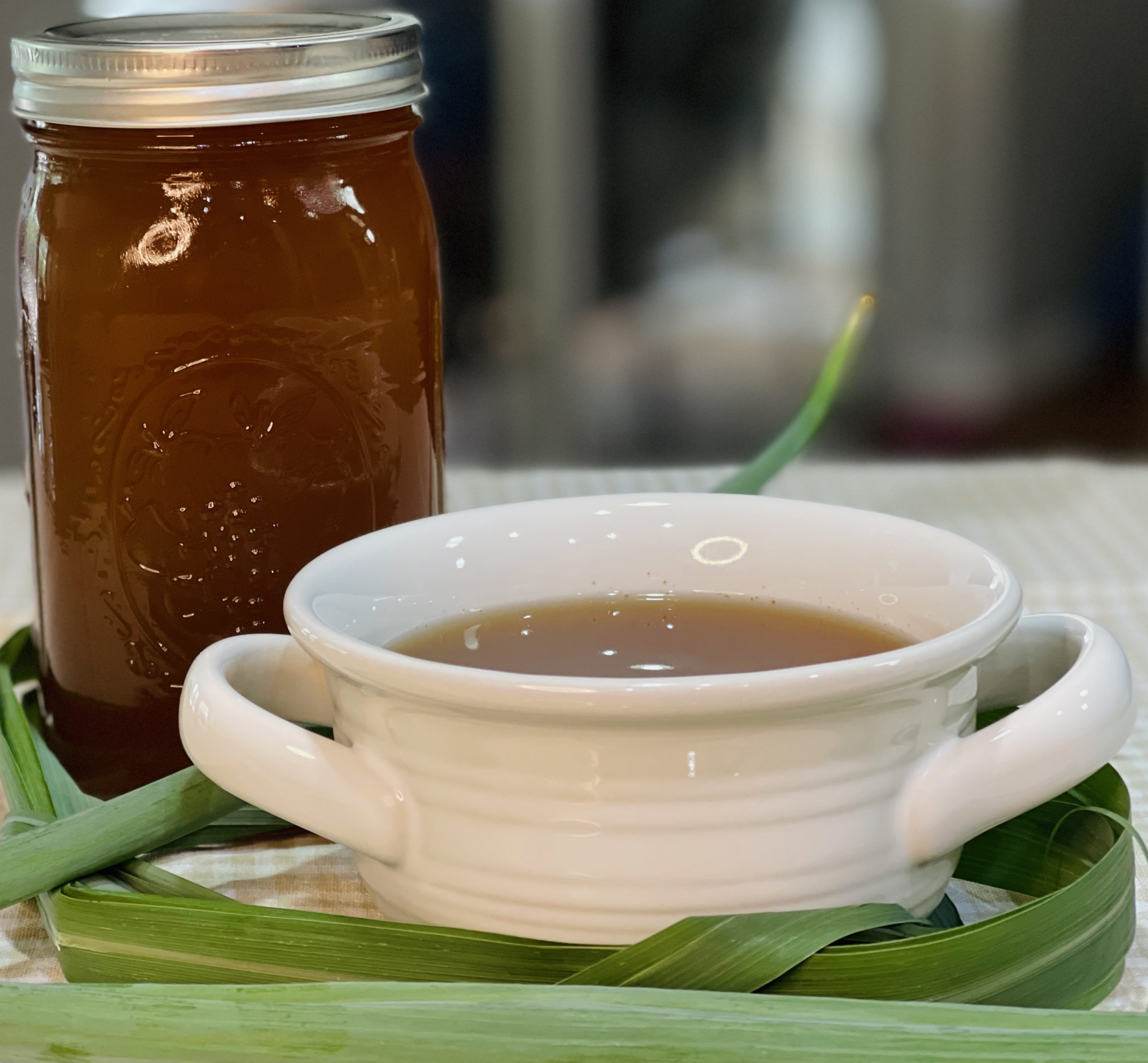
A Rich No-Waste Vegetable Stock Made With Vegetable Scraps
Equipment
- 8 qt Stockpot (or Pressure Cooker)
- Large Fine-Mesh Strainer ( or Colander)
Ingredientes
What to freeze:
- tomato skins and tops
- bulb onion skins and cut tips i.e. Spanish onions, yellow onions, sweet onions, red onions, shallots, etc.
- carrot peels and ends
- celery scraps, leaves, and ends
- garlic peels, cut tips, and scraps
- herb stems and leaves
- any green onion scraps i.e. scallions
- leeks trimmings rinsed very well
- lemongrass
- mushroom trimmings i.e. portobello stalks
- ginger peels
- cobs of corn
- bell pepper stems, seeds, leaves, and scraps
For the broth:
- 8 cups vegetable scraps or a half-full gallon-sized freezer bag
- 2 tsp whole black peppercorns you can substitute with 1 tsp ground pepper
- 8 cups water
- 1 tsp salt
Optional:
Elaboración paso a paso
How to freeze vegetable scraps:
- Place the vegetable scraps in the freezer bag, remove all excess air, seal completely, and store in the freezer for up to 10 months.
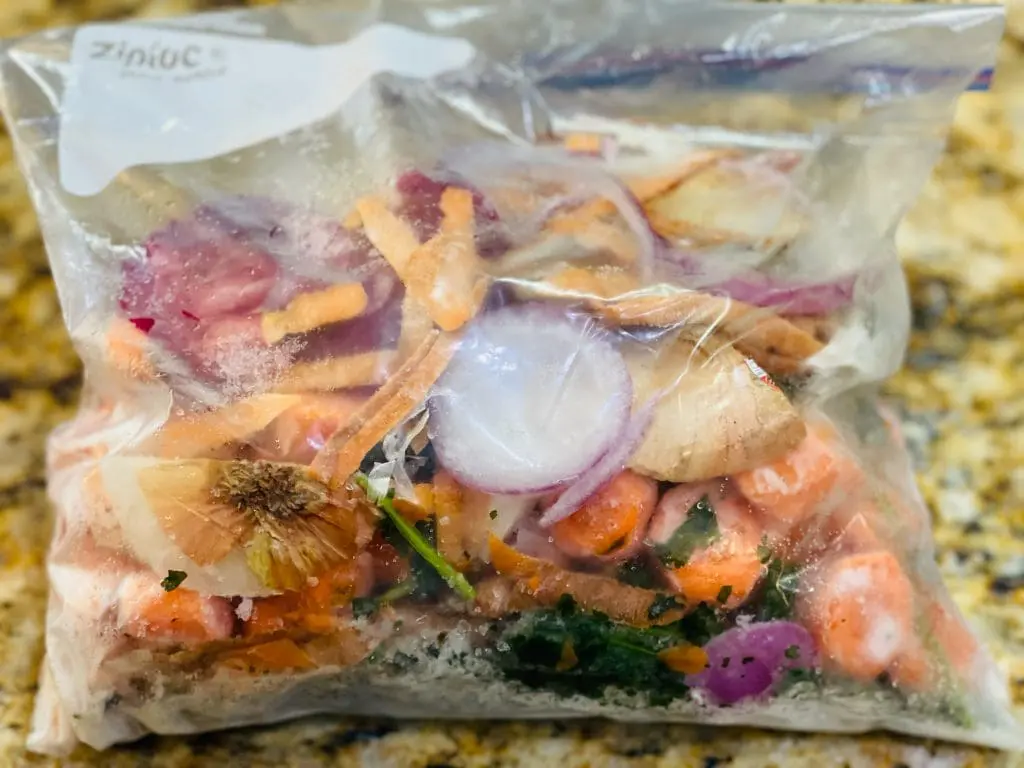
To make stock:
- In an 8 qt stockpot or pressure cooker, add the frozen vegetable scraps.
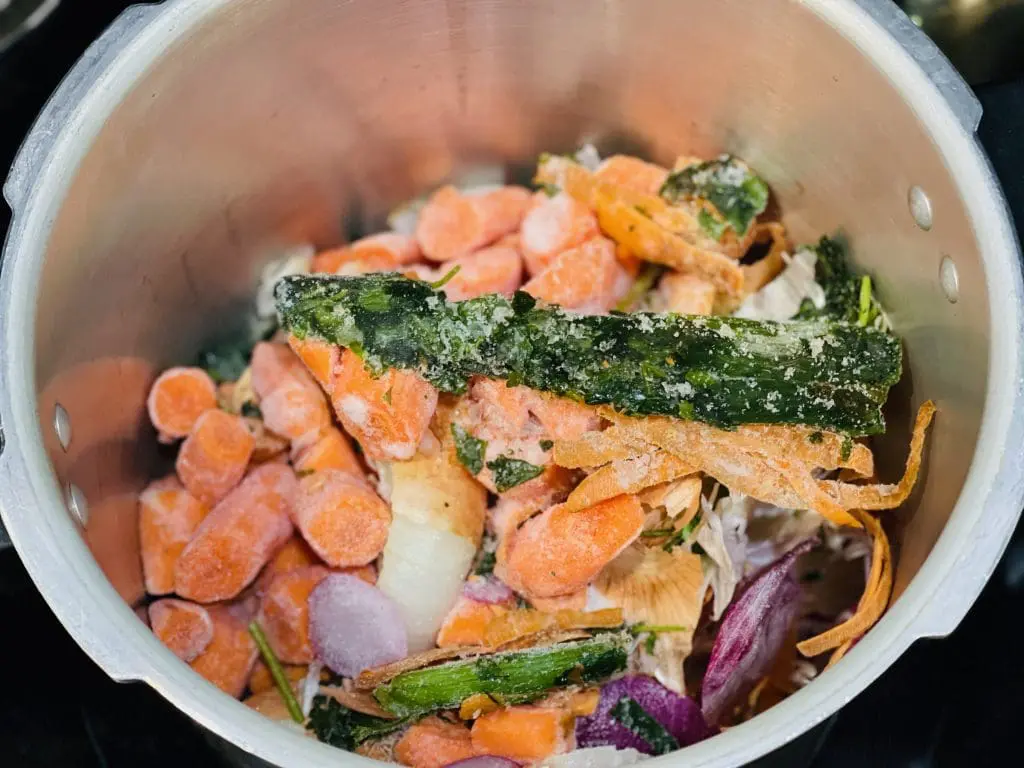
- Measure the depth of the vegetables and double the depth by adding water, approximately 8 cups of water. If you're using a pressure cooker, do not fill more than ⅔. Overfilling can cause liquid to spew from the pressure release valve.
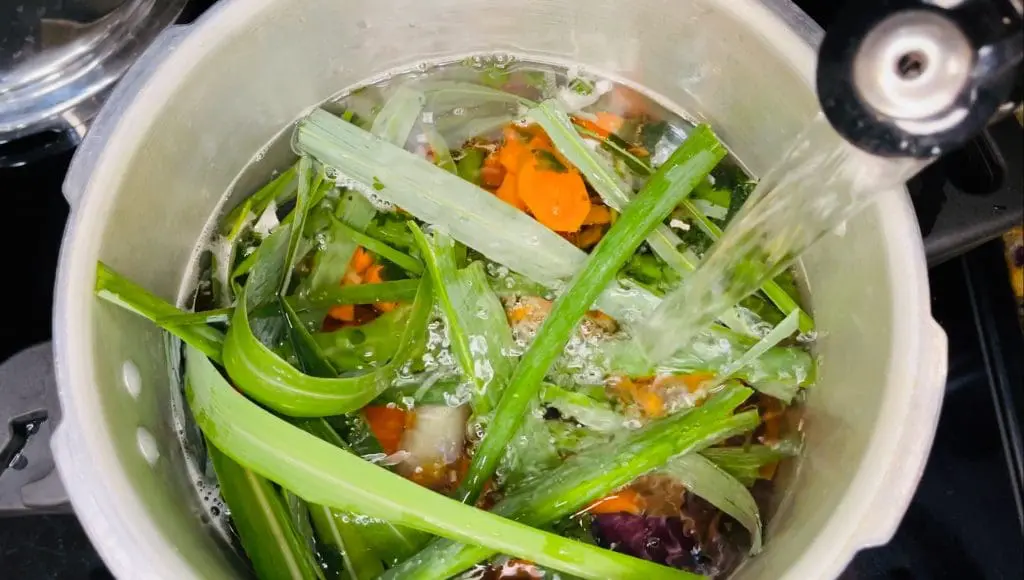
- Add in the salt, whole black peppercorns, and optional bay leaves.
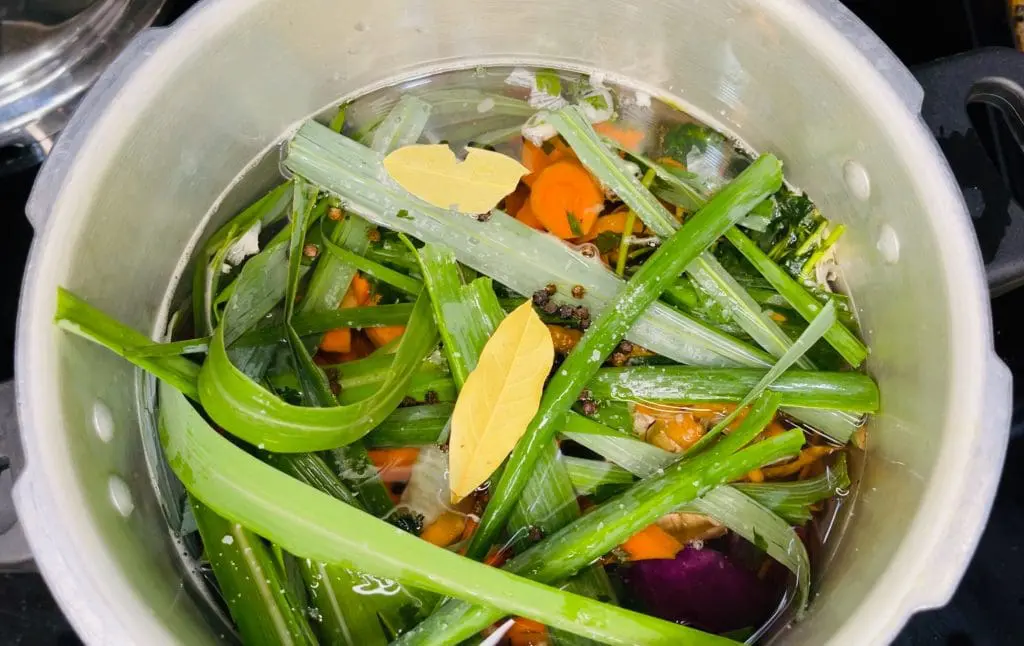
If using a stockpot:
- Over high heat, bring to a boil and then cover and lower to a simmer over medium-low to low heat.
- Let simmer for 4-12 hours; the longer, the better.
- After at least 4 hours, taste the vegetable stock. You're looking for a rich vegetable flavor; if it tastes like watered-down tea, you need to cook it longer.
- When your vegetable stock is ready, place a colander or a large fine-mesh strainer into another large pot or mixing bowl and pour out the contents from your stockpot into the strainer. Lift the strainer, containing all of the vegetable scraps, from the large pot or mixing bowl and hold it just above, filtering out the last drops of stock.
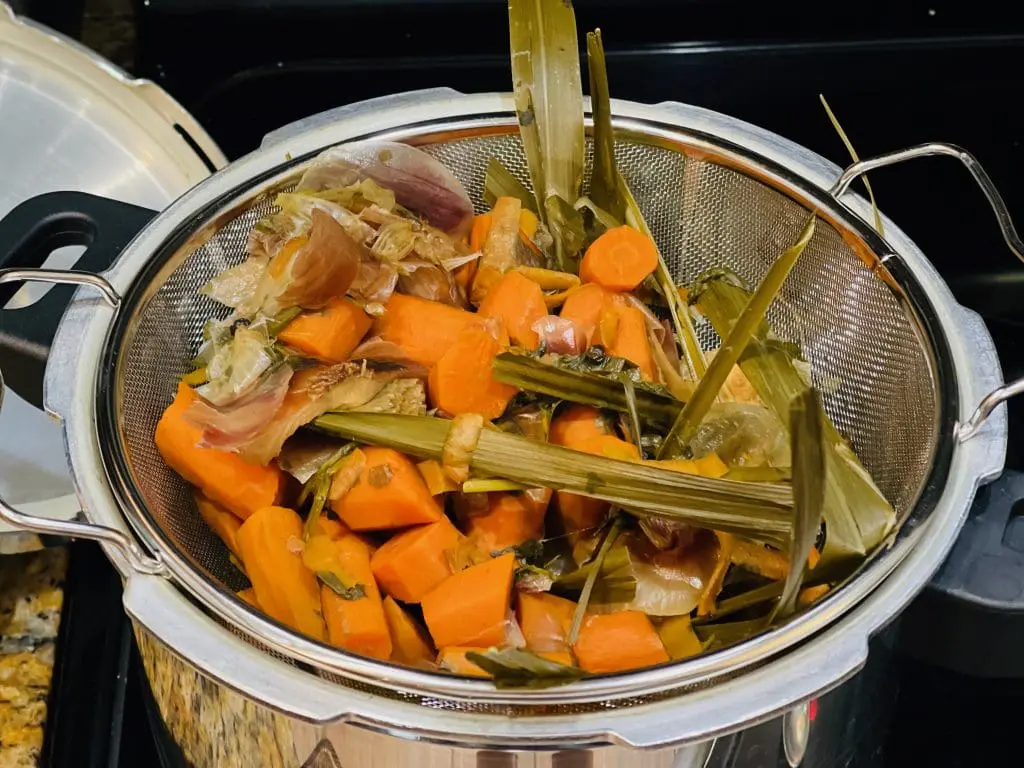
- You should only have vegetable stock left in the pot or bowl. Set aside to cool. Use immediately, refrigerate for up to 5 days, or store in the freezer for no longer than 3 months.
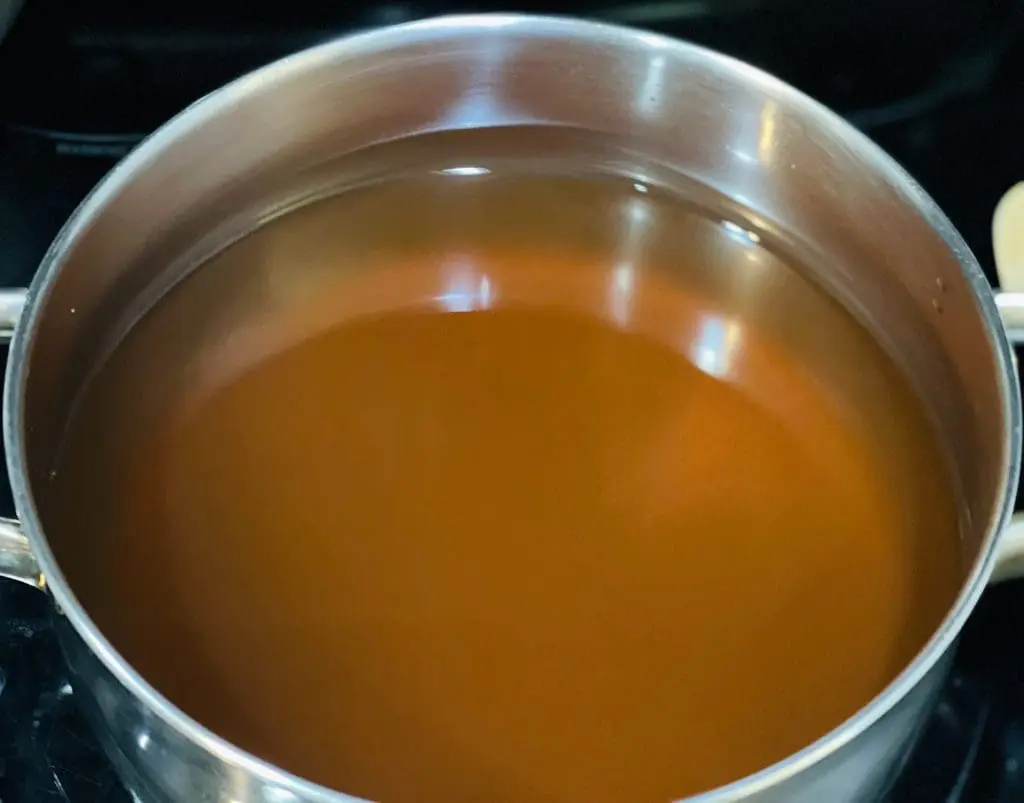
If using a pressure cooker:
- Secure pressure cooker lid and raise heat to high heat.
- Once you hear the pressure cooker hissing, lower heat to low and leave to cook for 2-4 hours; the longer, the better.
- After at least 2 hours, release all of the pressure from the pressure cooker until the float valve drops and you no longer hear steam escaping. Taste the vegetable stock. You're looking for a rich vegetable flavor; if it tastes like watered-down tea, you need to cook it longer.
- When your vegetable stock is ready, place a colander or a large fine-mesh strainer into another large pot or mixing bowl and pour out the contents from your pressure cooker into the strainer. Lift the strainer, containing all of the vegetable scraps, from the large pot or mixing bowl and hold it just above, filtering out the last drops of stock.

- You should only have vegetable stock left in the pot or bowl. Set aside to cool. Use immediately, refrigerate for up to 5 days, or store in the freezer for no longer than 3 months.

No-Waste:
- Freeze any vegetables you have on hand that may expire before you're able to use them.
Pro Tip:
- If using a stockpot, once you bring your stock to a boil, you can set your oven to 200 degrees, remove the lid and let it cook low and slow overnight. I do not recommend this method for households with small children or ovens without locking mechanisms.
- Leave 1" of space if using glass Ball jars to store your stock in the freezer.
Notas
Nutrition
¿Has hecho esta receta?
Por favor, ¡hazme saber cómo te ha quedado! Deja un comentario a continuación, etiqueta a @domesticgourmet en Instagram y usa el hashtag #domesticgourmet.
Sobre el autor: Ciji Castro
Ciji Castro es el CEO y Chef Ejecutivo detrás de Gourmet Domésticouna marca de alimentos y estilo de vida de primera calidad basada en el respeto a la cocina ancestral y las tradiciones latinas. Con un profundo amor por los sabores atrevidos inspirados en el patrimonio y los ingredientes limpios, Ciji dirige la visión y la dirección culinaria de la línea de productos Domestic Gourmet.
Su producto estrella, 🌿 Domestic Gourmet Organic Annatto Oil – Aceite de Achiote, aporta un color y un sabor vibrantes a todos los platos, celebrando los sabores de sus raíces cubanas y puertorriqueñas y cumpliendo al mismo tiempo las normas de las cocinas actuales, preocupadas por la salud.
A través de Domestic Gourmet, Ciji tiene la misión de compartir la riqueza de la cocina cultural con un toque moderno y práctico: un producto cuidadosamente elaborado cada vez.
Síguenos en @domesticgourmet para recetas, consejos de cocina y mucho más.
